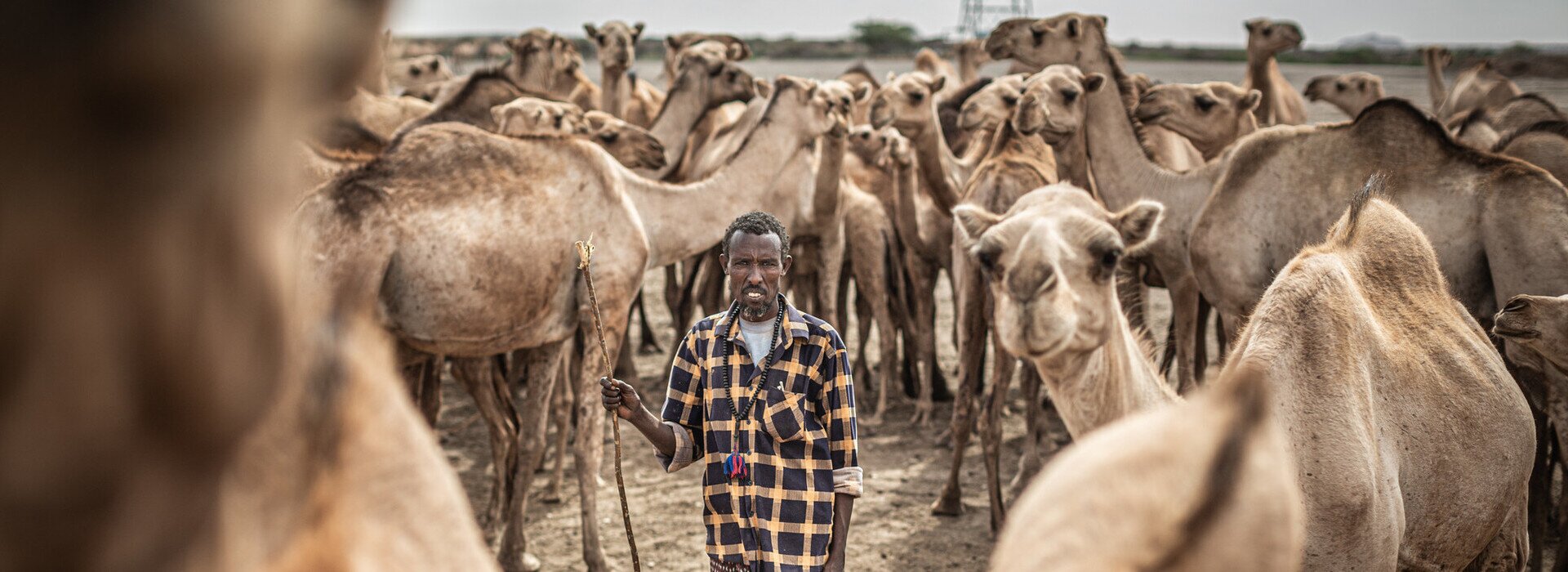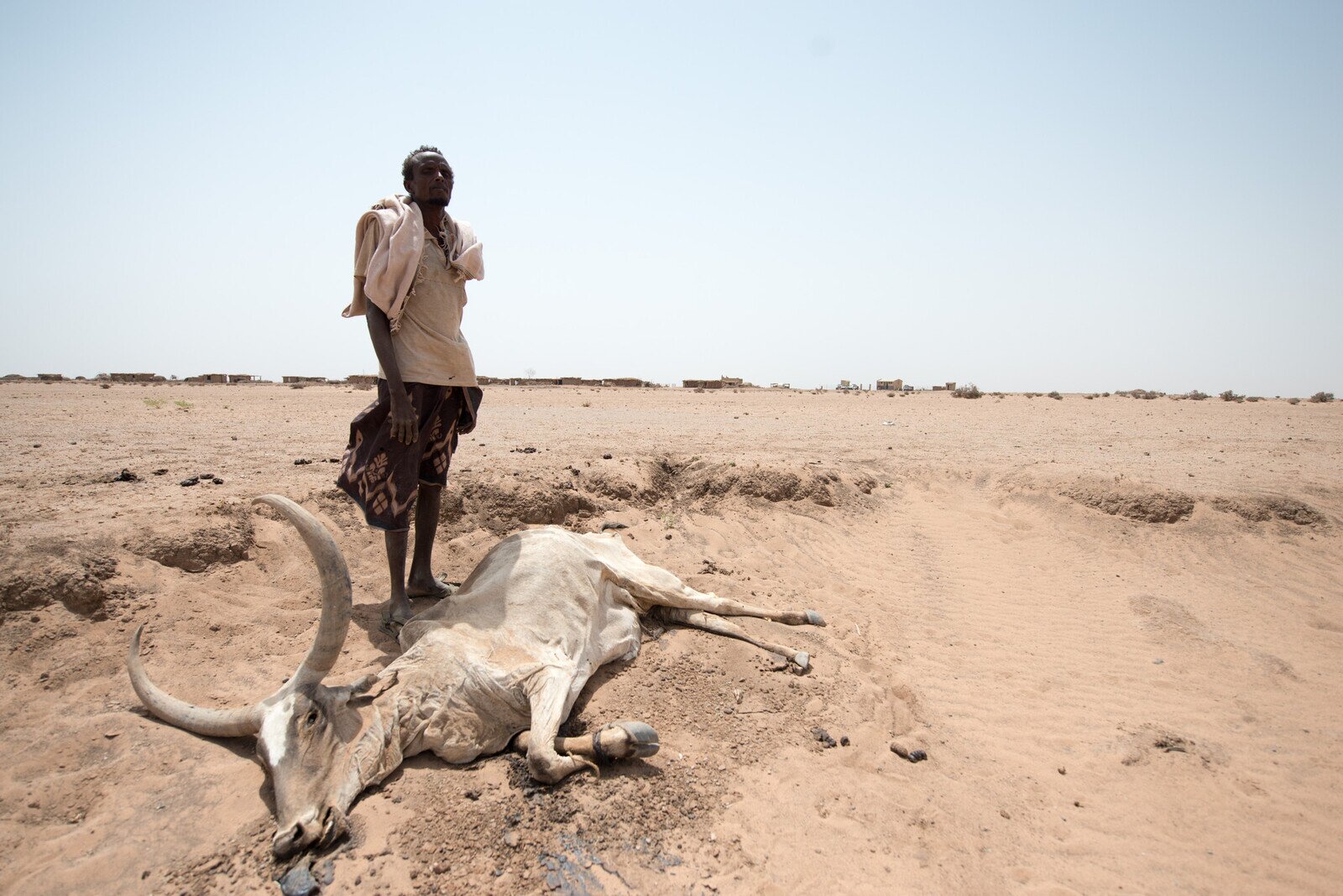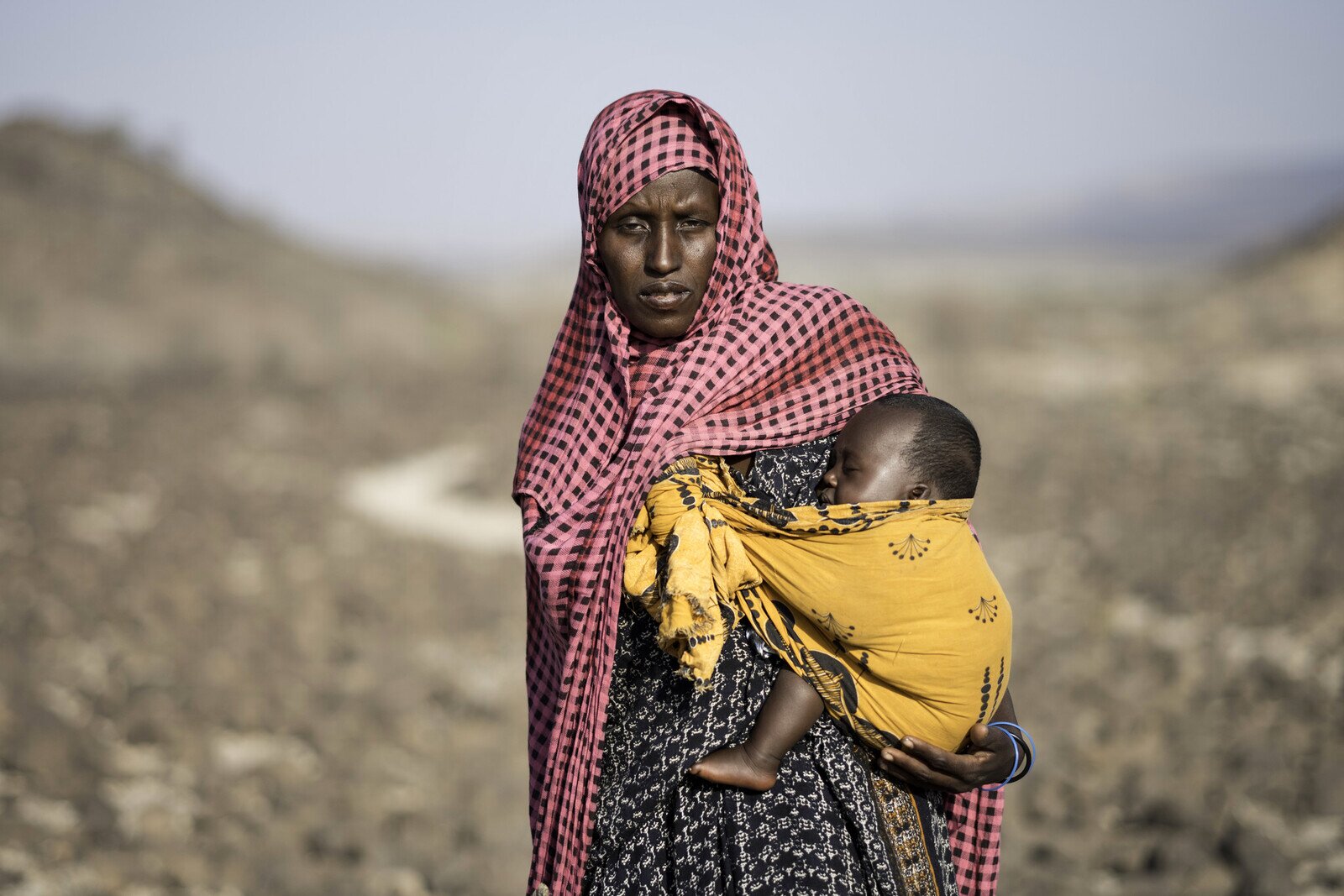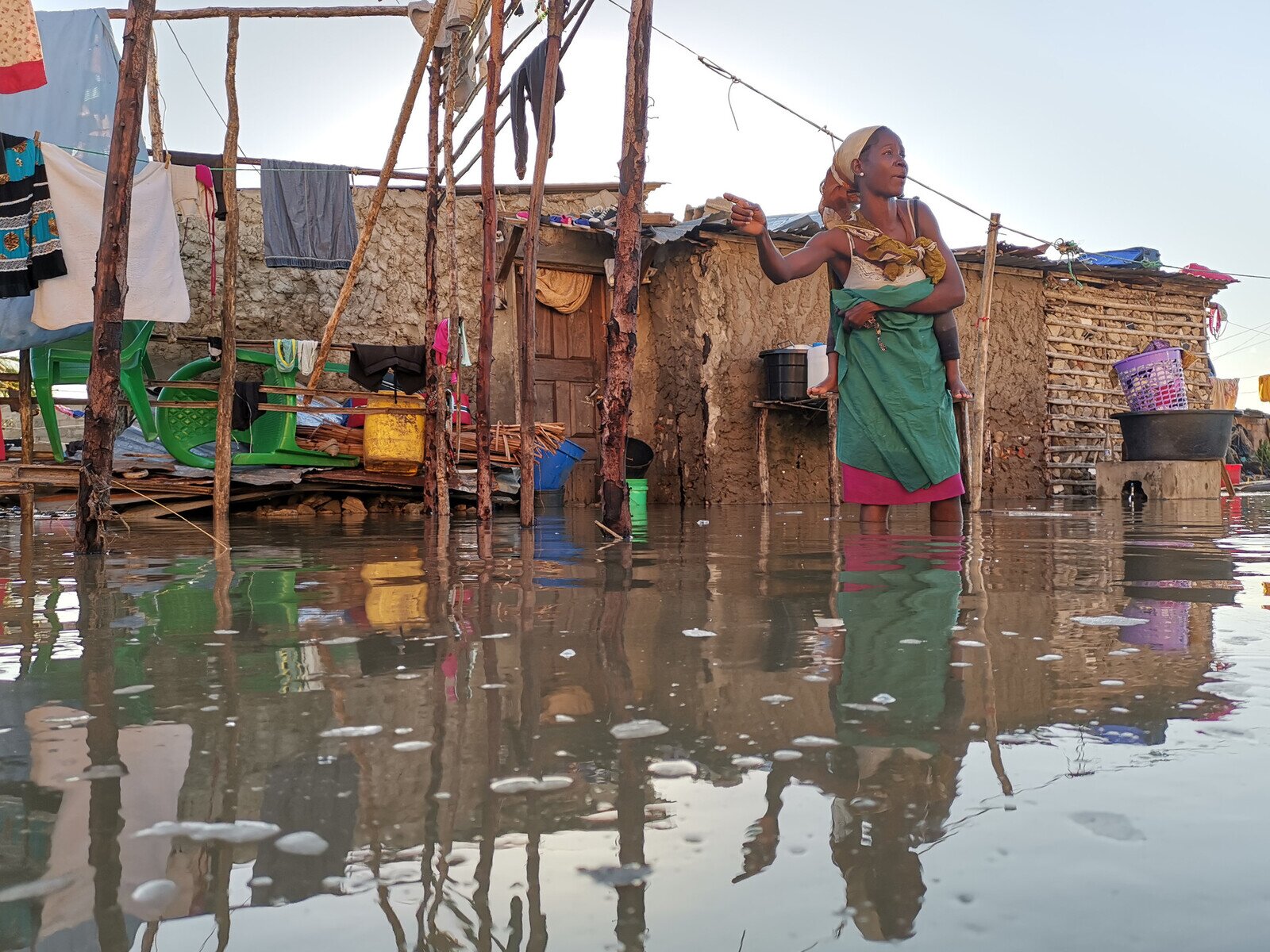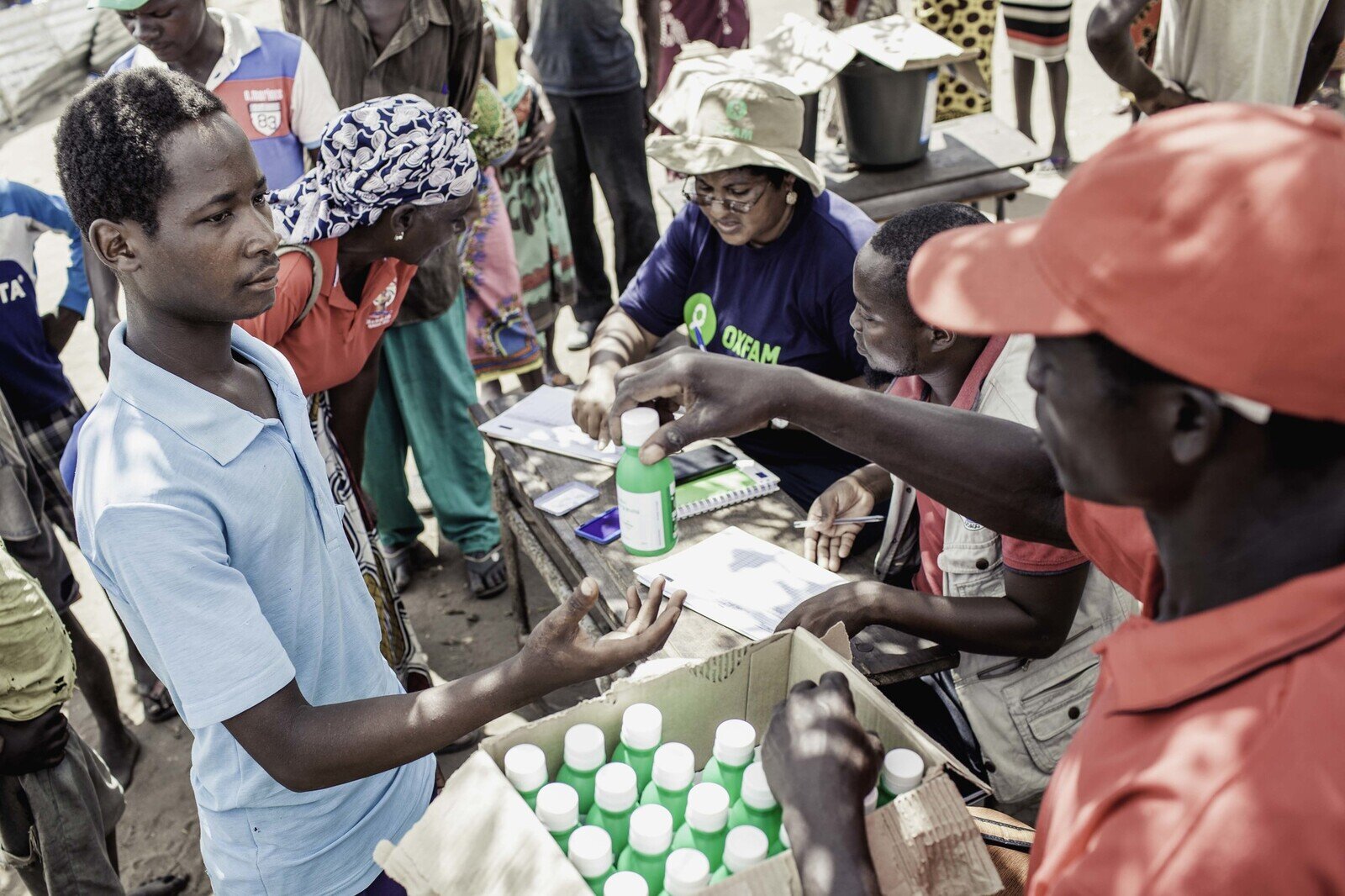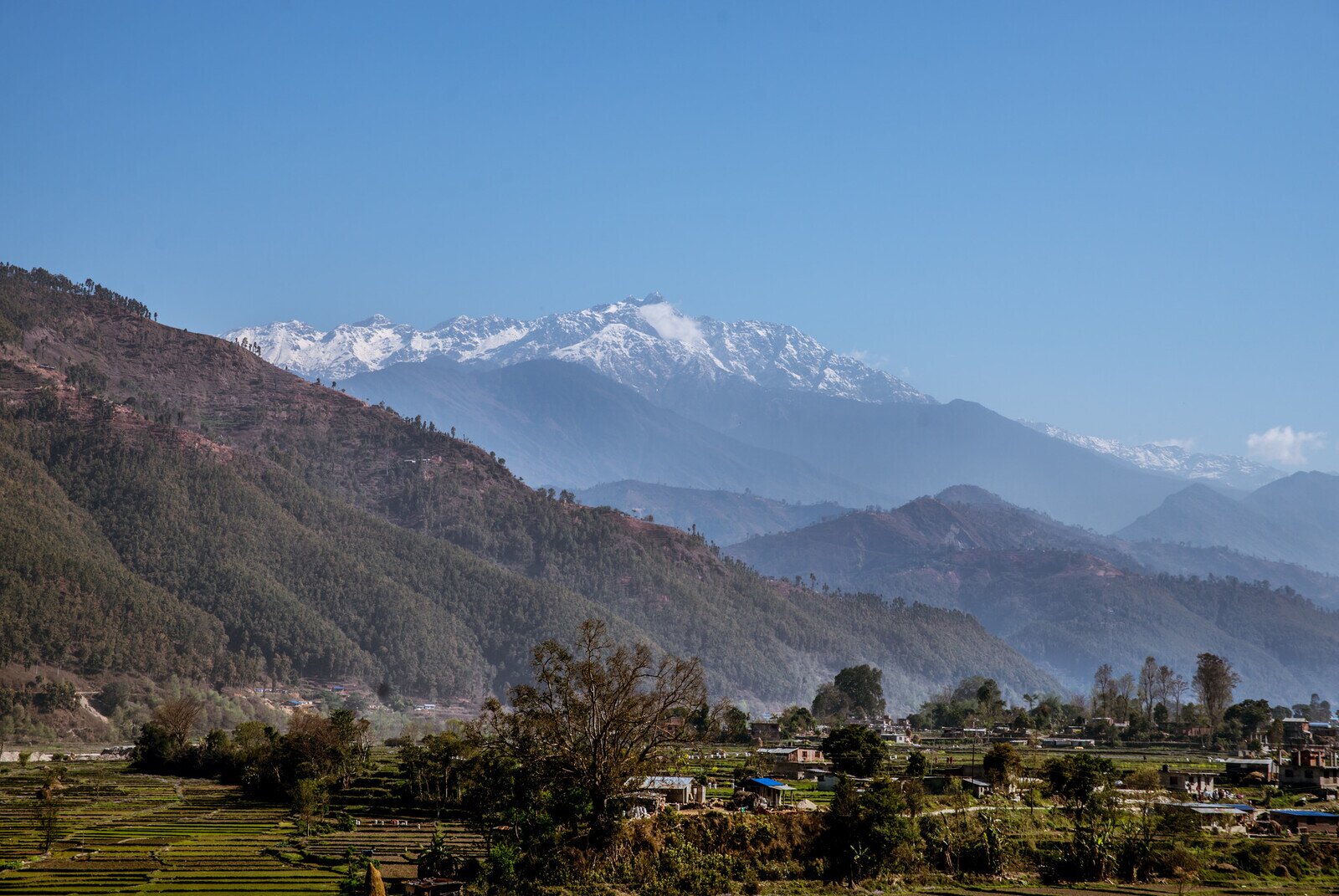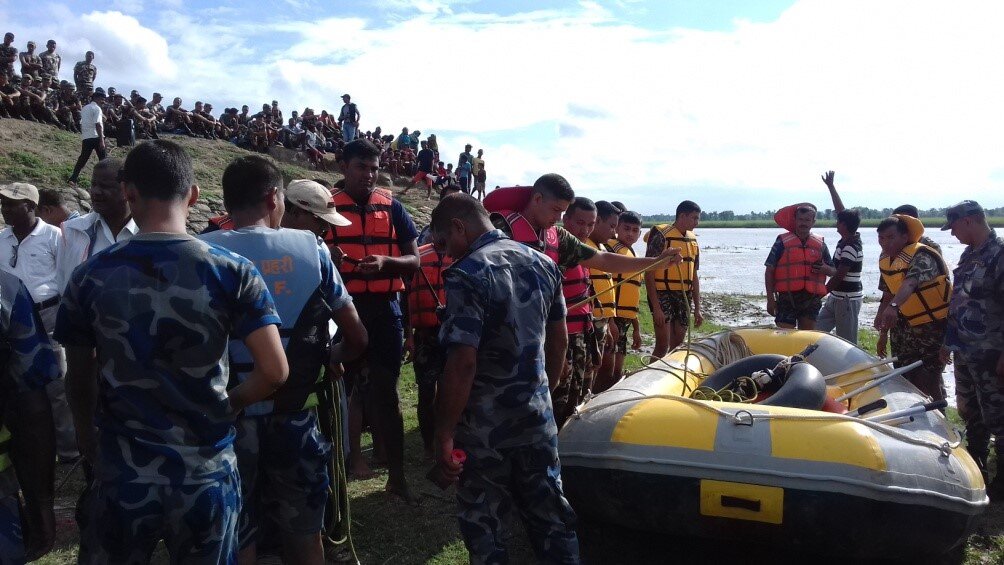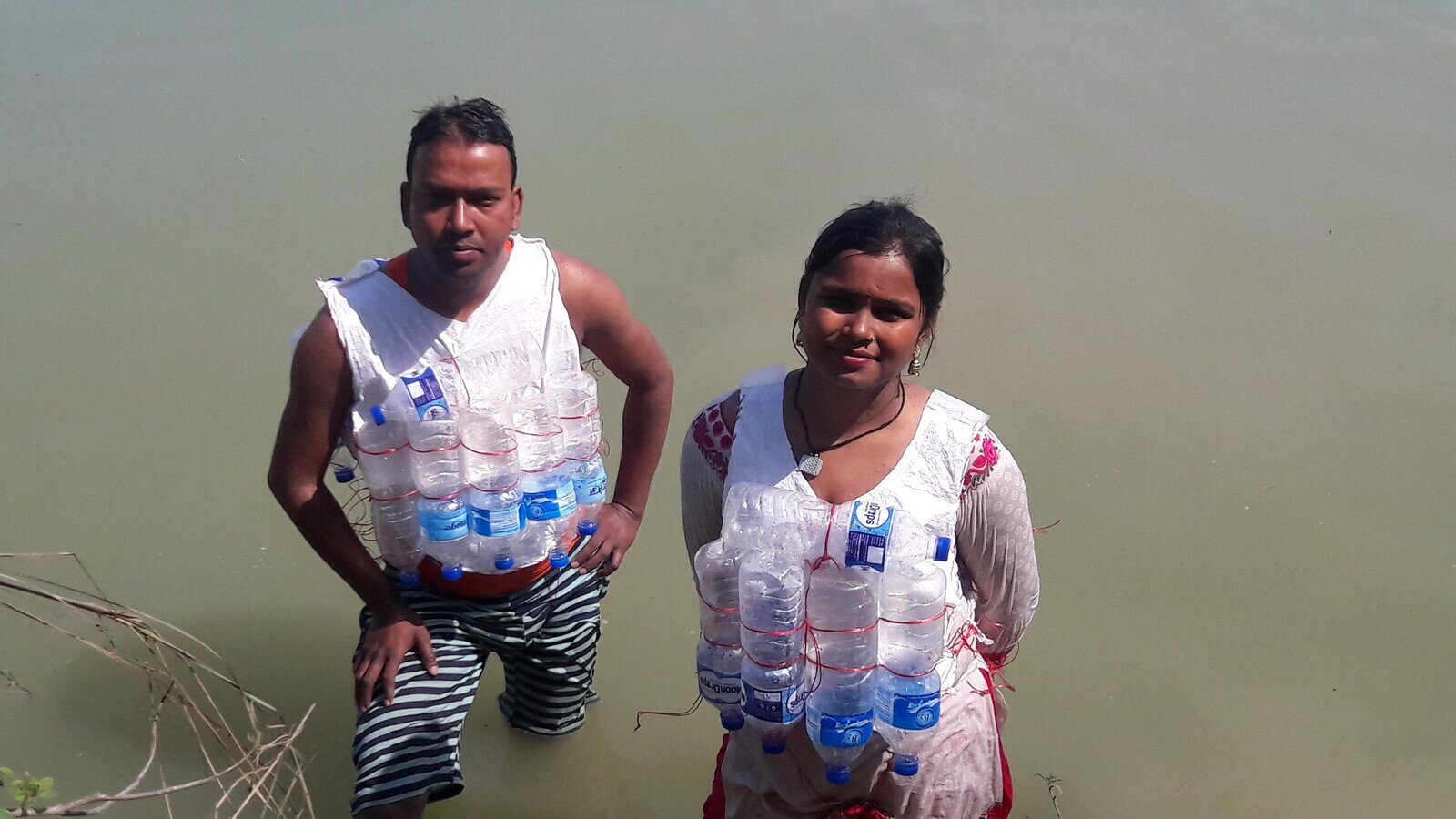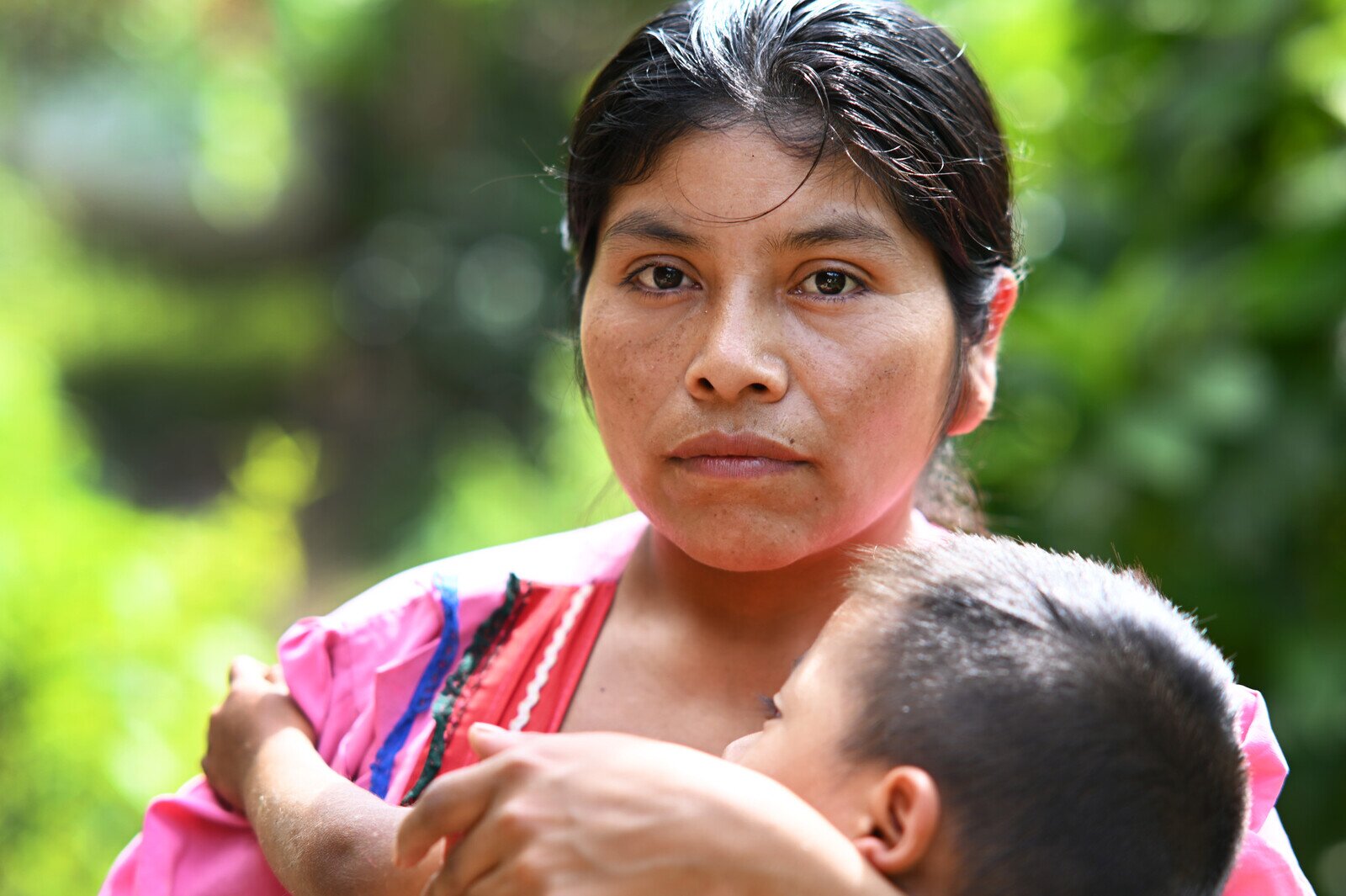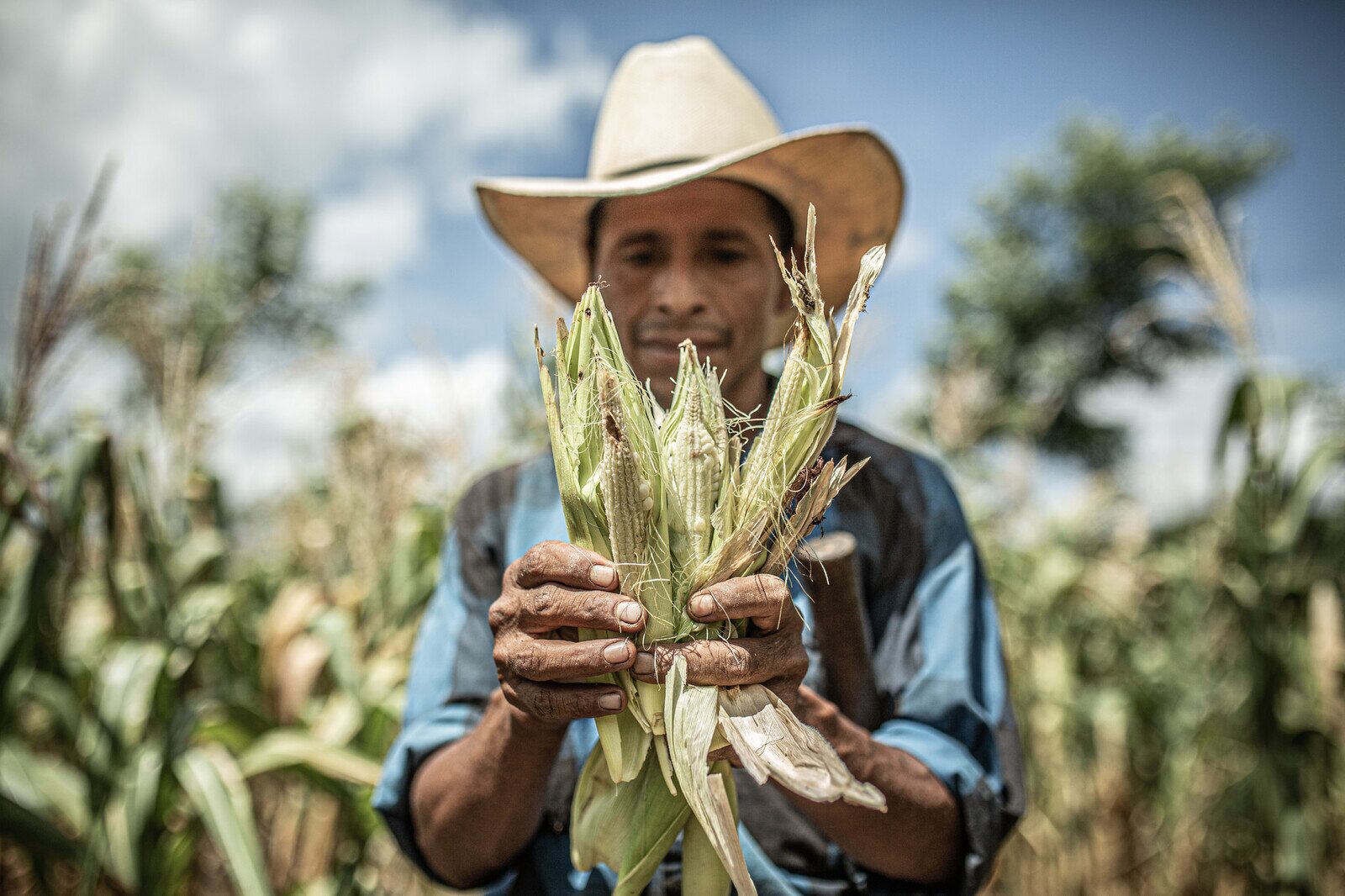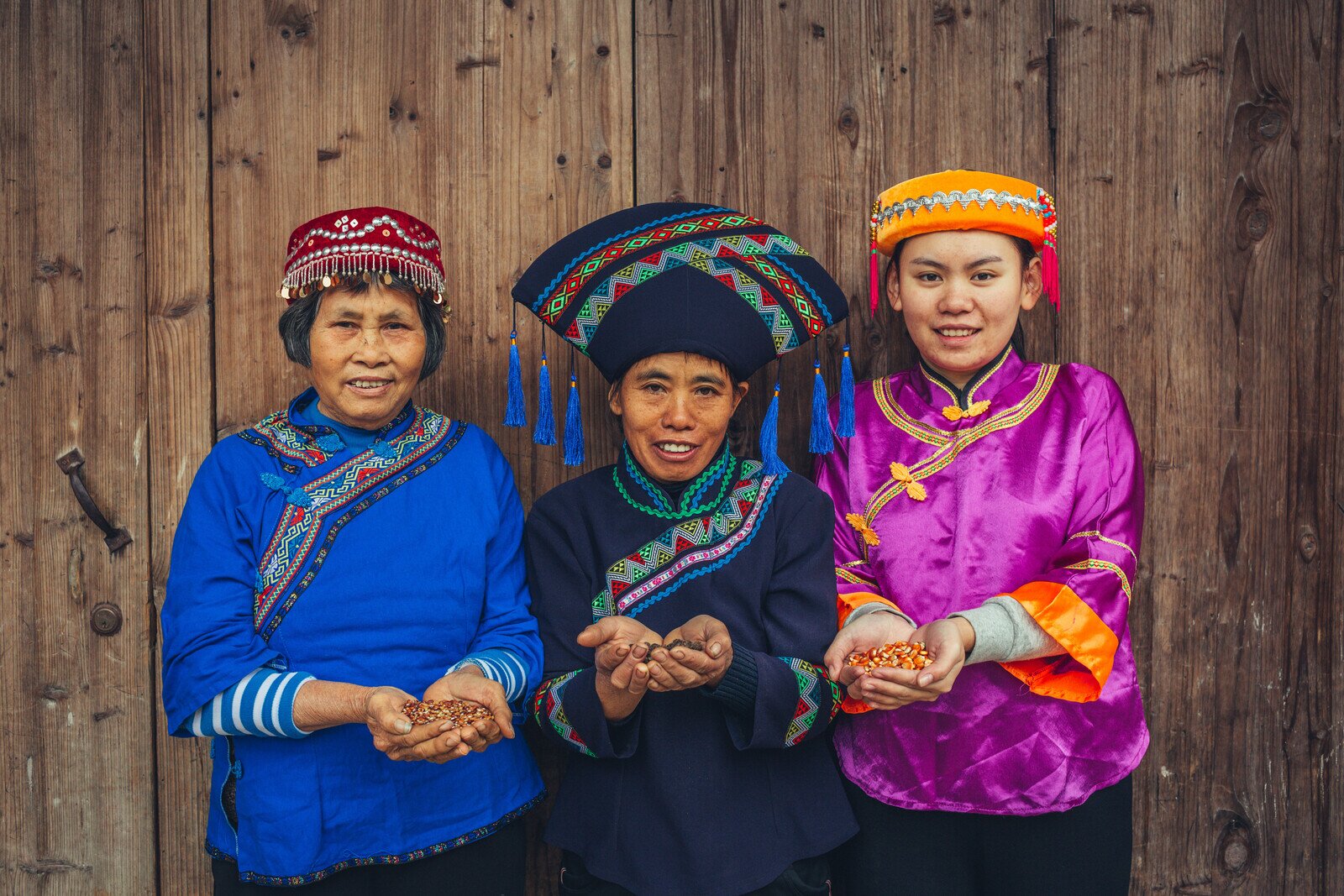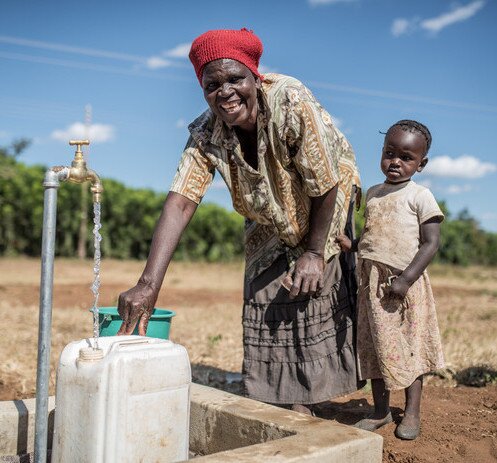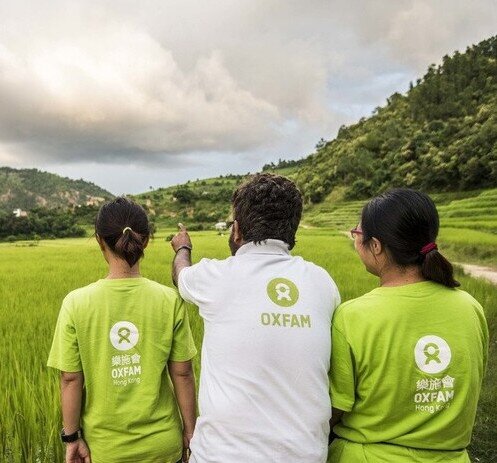After one of the strongest El Niños ever recorded, Ethiopia has suffered erratic rains and severe drought in many regions, putting millions of people at risk of hunger and diseases. Abdi (pictured) brought what remains of his livestock here in search of water, about 30 kilometres from his home in an adjoining district, because there is no water there and his herd is dying. ‘I used to have 300 sheep, goats, and camels, now I have about 25 camels,’ he says. (Photo: Pablo Tosco / Oxfam)
Climate change hits poor communities first and worst
Loss of livelihoods and hunger
Currently, 800 million people go to bed hungry every night, but ironically, 80 per cent are smallholder farmers: fisherfolk, pastoralists and landless farmers who produce food. Wild weather and unpredictable seasons are changing what farmers can grow and affecting their livelihoods. The poorest are often the most vulnerable and least prepared to cope with the effects of climate change. Ethiopia is one of them. More than 80 per cent of the population depend on agriculture. Erratic rains and severe drought have been putting millions of people at risk of hunger and disease.
However, the largest source of greenhouse gas emissions from human activities is from burning fossil fuels for electricity generation, travelling by car, ship and plane, etc.; hence, poor communities around the world are the least responsible for emissions. According to Oxfam’s report, the poorest half of the world’s population is responsible for just 10 per cent of carbon emissions, despite being the most threatened by severe weather shocks linked to climate change. Climate change hits poor people first and worst. It's a climate crisis that deepens poverty and exacerbates injustice.
Who takes the heat?
(Chi only)
Climate-fuelled displacement
In December 2019, Oxfam released a report titled ‘Forced from Home’ as world leaders gathered in Madrid for the UN Climate Summit. It revealed that over 20 million people a year – one person every two seconds – were internally displaced by extreme weather disasters between 2008 and 2018. While no one is immune, Oxfam’s analysis shows that people in poor countries, who bear least responsibility for global carbon pollution, are most at risk.
The report also shows that today, people are seven times more likely to be internally displaced by cyclones, floods and wildfires as they are by earthquakes and volcanic eruptions, and three times more likely than by conflict. This group of ‘climate refugees’ is mainly from developing countries such as Guatemala. A climate-fuelled El Niño period has brought the country nearly six years of drought. A recent Oxfam study estimates that nearly 80 per cent of the corn and bean harvest was lost in Guatemala in 2019, while almost 70 per cent of children in the worst hit areas in the country suffered from malnutrition.
People from the Small Island Developing States (SIDS), particularly those from the Caribbean and the Pacific, face the greatest risks. Seven of the 10 countries with the highest rates of displacement from extreme weather disasters over the past decade are classified as SIDS – a recognised grouping in UN climate and environmental negotiations.
| Country | Key cause of displacement | Percentage of population newly displaced by sudden-onset extreme weather events on average each year between 2008–18 | Emissions per capita (global rank out of 193 Member States of the UN as of 2014) | |
| 1 | Cuba | Tropical cyclones | 4.8% | 127 |
| 2 | Dominica | Tropical cyclones | 4.6% | 96 |
| 3 | Tuvalu | Tropical cyclones | 4.5% | 158 |
| 4 | Philippines | Tropical cyclones, floods | 3.5% | 170 |
| 5 | Saint Maartens | Tropical cyclones | 2.8% | (No data) |
| 6 | Vanuatu | Tropical cyclones | 2.4% | 131 |
| 7 | Fiji | Tropical cyclones, floods | 1.5% | 190 |
| 8 | Sri Lanka | Floods, storms | 1.4% | 147 |
| 9 | Tonga | Tropical cyclones | 1.3% | 121 |
| 10 | Somalia | Floods | 1.1% | 132 |
| Global average | 0.3% | |||
In Hong Kong, extreme weather is making the poorest life harder!
Extreme weather exacerbated by climate change has had a major impact on sanitation workers and their working environment. In summer 2021, Oxfam Hong Kong (OHK) commissioned a research team to interview 200 frontline outdoor cleaners, 90 per cent said they had to work in the sun most of the time, while nearly 70 per cent needed to work in the heat all day long. Despite this, employers have yet to provide them with cooling equipment and have failed to comply with the Labour Department’s guidelines on working in hot weather.
Furthermore, according to OHK’s study on sanitation workers working conditions at refuse collection points (RCPs) in summer 2022, the average temperature at RCPs is 32°C, which is even higher than the record-breaking average temperature outdoors (30.3 °C). Moreover, poor ventilation, wet and stifling heat, infestation, stench and the lack of resting space are common problems found in old, newly-built and renovated RCPs. More than 65 per cent of sanitation workers said they always feel unwell when they work at RCPs, more than 75 per cent of interviewees said they could only find cooler areas outside to eat and rest, which has led members of the public to misunderstand and accuse them of being lazy, which also put them in the risk of being reported and lost their job.
Extreme weather aren’t just affecting the poorest when they work outdoors. Their homes have become so hot they’re like bamboo steamers – temperatures are sometimes even hotter than they are outdoors. OHK commissioned a research team to interview 200 people from low-income backgrounds who lived in subdivided flat across Hong Kong in September 2021.
The study found that temperatures inside these flats were hotter than outside – some even 5.8 degrees Celsius hotter. The hottest flat saw temperatures soar as high as 35.1 degrees Celsius. Nearly 70 per cent of respondents said that the intense heat affected their everyday lives, especially their physical health. They also found it difficult to work/study, and experienced more stress. Over a quarter of respondents also said that their flats would see some sort of damage during typhoons or rainstorms. Since some of their landlords were unwilling to pay for repairs, they were left to shoulder for the expenses on their own, which added to their financial burden.
In summer 2024, OHK collaborated with LinkAIQ, a health tech start-up introduced by Cyberport, to develop a wearable heat stroke detection system. The system utilizes a smartwatch to send real-time territory-wide heat stress at work warnings issued by the Hong Kong Observatory (HKO) and Oxfam’s local warnings. Outdoor cleaners can receive warning signals directly through the watch, reminding them to take necessary breaks in high-heat environments. In addition, the smartwatch monitors vital health parameters, enabling cleaners to keep track of their physical condition and raising awareness about heat stroke prevention.
To gather local heat stress data, the Oxfam team set up Wet Bulb Globe Temperature (WBGT) devices in North districts, Tsuen Wan and Kwun Tong in July and August 2024. These devices were placed in open, well-ventilated outdoor locations to simulate the actual working environments of outdoor cleaners.
During the 28 days of effective testing, there were 16 days where the North district’s heat index triggered more hours of heat stress warning compared to the HKO’s record. While the North District’s index reached the red Heat Stress at Work Warning level for 16 days and half of them even reached the black Heat Stress at Work Warning level. This indicates that workers in that area faced significantly higher heat stress than the HKO's territory-wide index suggested.
Our team also distributed smartwatches to approximately 300 outdoor cleaning workers. Nearly all interviewees agreed smart watches were faster and more convenient than phones for receiving heat alerts and weather updates. Overall, most cleaners agreed that the heat stress smart watches improved their heat awareness and reminded them to rest and stay hydrated, helping them prevent heat stroke.
Watch: Day vs Night: Climate Injustice in Hong Kong
Oxfam advocating for climate justice
In 1992, the world took its first steps towards addressing climate change by holding the United Nations Framework Convention on Climate Change (UNFCCC) in Rio de Janeiro, its first summit-level meeting. Then in 1995, an annual meeting, the Conference of Parties (or COP), was convened to assess the progress made in the fight against climate change.
Oxfam first proposed to fight climate change at the Bali Climate Change Conference in 2007. Since then, Oxfam has continued to look into issues like climate change and how it relates to poverty, as well as climate justice. In order to prevent the impacts of climate change from devastating poor countries and communities, ‘mitigation’ and ‘adaptation’ must be carried out hand in hand.
Reducing the threat of climate change for vulnerable countries
Even if the world stops emitting greenhouse gases right now, the cumulative effects of the pooled greenhouse gases would still warm the earth and bring about severe negative impacts.
Therefore, poor communities have an unparalleled need to adapt to climate change. Adaptation implies a transformation in farming methods and the means of income generation, and reducing the direct impact on livelihoods from an unpredictable climate:

In the drought-ridden regions of Tanzania, farmers are switching to drought-resistant crop species; establishing support groups and agricultural cooperatives to strengthen smallholder farmers’ collective bargaining power. (Photo: Sunsun Leung / Oxfam Volunteer Photographer)

In mainland China, Oxfam has been advocating local governments to develop sustainable livelihoods in rural areas and adopt a community-driven approach that focuses on four major areas: increasing incomes, disaster relief and risk reduction, climate change adaptation, as well as establishing organisations that are run by and for the community. (Photo: Antonio Leong / Oxfam Volunteer Photographer)

In Vietnam and the Philippines, mangroves are planted as a buffer to storm surges. (Photo: Elizabeth Stevens / Oxfam)
Rich polluting countries must deliver the promised amount of funding to support emission reductions and adaptation in poor countries
In addition to more ambitious emissions cuts, rich polluting countries have promised to help poor countries and communities adapt and take the measures needed to help them remain in their communities and on their land. Several wealthy countries committed at COP15 in 2009 to provide US$100 billion per year to developing countries between 2020 and 2025 to support their work in mitigation and adaptation, technology development, and capacity building.
According to Oxfam's ‘Climate finance in Asia’ report, released ahead of COP27 in 2022, 18 developing countries in Asia need an estimated US$13 trillion from now until 2030 to address the impacts of climate change. However, between 2013 and 2020, these countries only received about US$113 billion in climate finance, which is equivalent to an average of US$14 billion per year. More than half of this was provided in the form of loans, making the situation even worse for vulnerable countries.
In 2022, the United Nations Climate Change Conference made a historic commitment – to establish a loss and damage fund to assist poor countries to respond and adapt to the climate crisis. However, to ensure that poor communities affected by the climate crisis receive the necessary support:
- Governments and providers of climate finance must ensure that more substantial, grant-based finance is available to vulnerable communities facing the climate crisis.
- Climate finance must be transparent and traceable. Local communities, civil society organisations and local governments should also lead the decision-making process, while focusing on the needs of women and girls, to ensure decisions are truly beneficial to the poor.
- Developed countries should clearly indicate how they will fulfil their commitments and the funds provided must be in line with the actual needs of the most vulnerable regions and countries in Asia.

